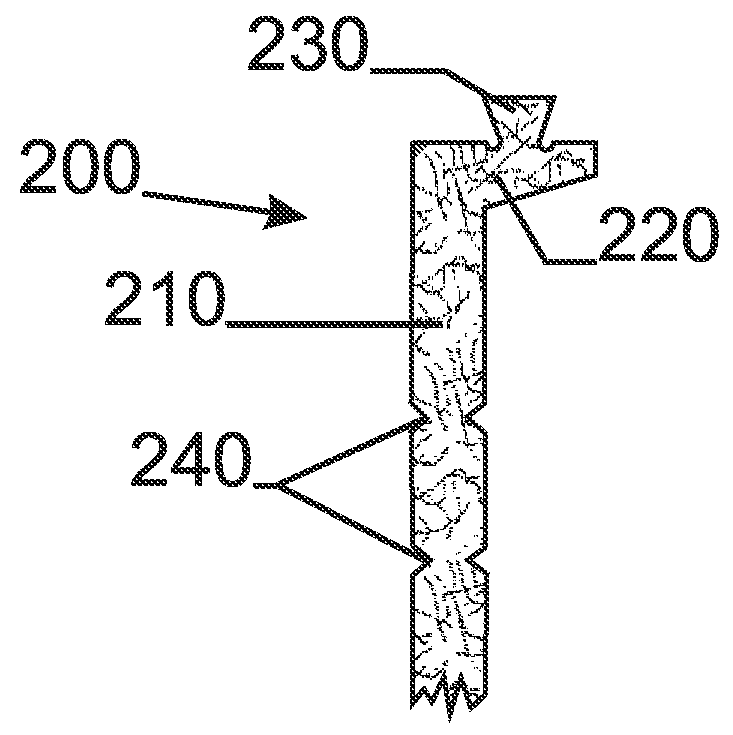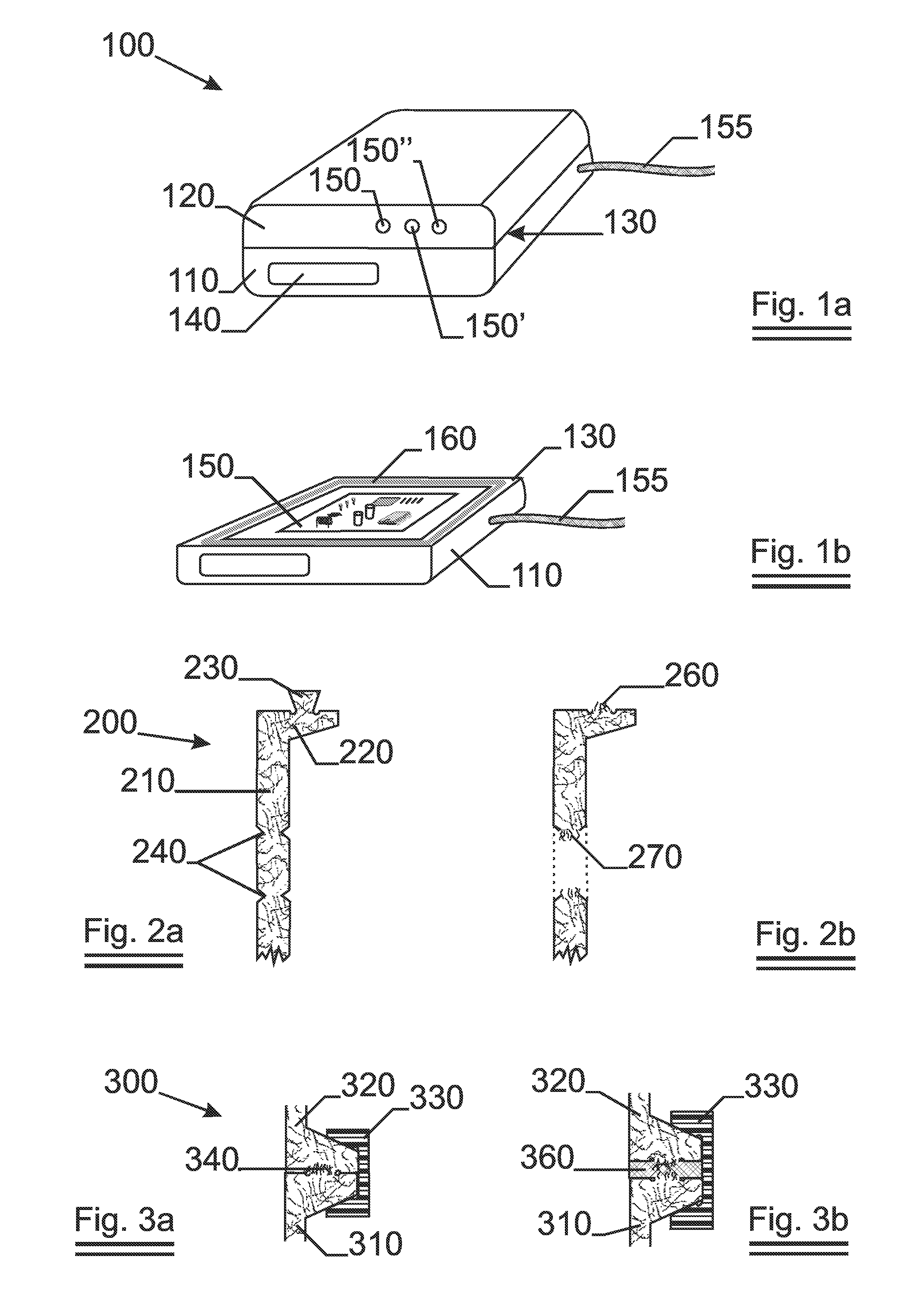Polymer Emi Housing Comprising Conductive Fibre
a technology of conductive fibre and polymer emi, which is applied in the direction of shielding materials, ways, casings/cabinets/drawers of electrical apparatus, etc., can solve the problems of particularly difficult edges of the shell, and achieve the effect of improving shielding efficiency and efficient production
- Summary
- Abstract
- Description
- Claims
- Application Information
AI Technical Summary
Benefits of technology
Problems solved by technology
Method used
Image
Examples
first embodiment
[0071]In a first embodiment granules containing 75% by weight stainless steel fibres (the remainder being 25% by weight polymer material). The stainless steel fibres have an equivalent diameter of 8 μm and are 5 mm long. The fibres were made from AISI302 type of stainless steel. These were mixed into a masterbatch with PC granules so as to obtain 3% of stainless steel fibre by volume in the finished shell. A shell—in the form of a half box like the one depicted in FIG. 1 but without apertures—was injection molded from this mixture under optimised conditions for injection pressure, back pressure, injection speed, temperature and other process parameters: a procedure known to the person skilled in the art. The width of the shell was 3 mm. In a first attempt to make a joint, an overlap between the edges of the shell was implemented: at the borders, the mold was such that the thickness of the shell halved at 5 mm from the edges. Matching the two pieces together formed the joint that was...
third embodiment
[0076]In a third embodiment, the results of which are represented in FIG. 8, a masterbatch was prepared by mixing fibre granules with PC and ABS polymer granules. The masterbatch contained 30% by weight stainless steel fibres of type AISI302 the remainder being the polyester jacket. Fibres have an equivalent diameter of 8 μm and a length of 5 mm. The volume concentration of fibres was raised to 6%. Again an overlap joint and a joint with uncovered fibres and a gasket were made and measured. Again the fibres were uncovered by breaking-off the lips. The results are shown in FIG. 8: 850 is the curve for an overlap and 860 is the curve for uncovered fibres in combination with the gasket. The influence of the increased fibre volume is obvious.
[0077]Besides the above three embodiments many others have been made and tested. With the other uncovering methods the following general results were obtained:[0078]Scraping-off the polymer rich layer at the edges of the shell yields results that ar...
PUM
| Property | Measurement | Unit |
|---|---|---|
| length | aaaaa | aaaaa |
| length | aaaaa | aaaaa |
| equivalent diameter | aaaaa | aaaaa |
Abstract
Description
Claims
Application Information
 Login to View More
Login to View More - R&D
- Intellectual Property
- Life Sciences
- Materials
- Tech Scout
- Unparalleled Data Quality
- Higher Quality Content
- 60% Fewer Hallucinations
Browse by: Latest US Patents, China's latest patents, Technical Efficacy Thesaurus, Application Domain, Technology Topic, Popular Technical Reports.
© 2025 PatSnap. All rights reserved.Legal|Privacy policy|Modern Slavery Act Transparency Statement|Sitemap|About US| Contact US: help@patsnap.com



